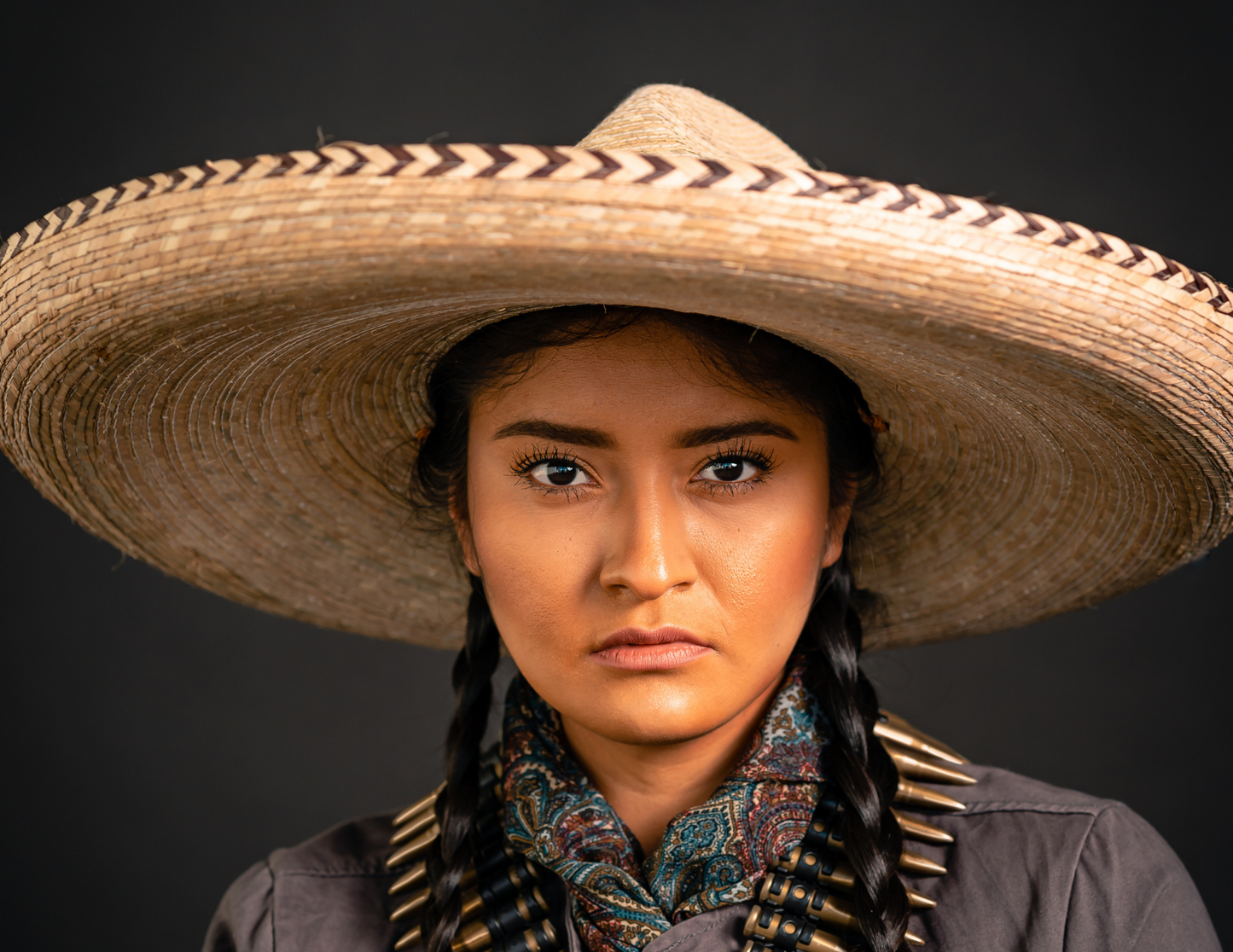
*First shared on March 1, 2021
Earlier this year, my sister and I spoke about bringing to life a campaign that honored women. We centered women like our mother, our tias, our abuelas and the many women like them who have come before us and paved the way. We knew that we wanted to highlight women who have all been presented with many challenges but through it all had remained resilient.
When it came down to putting together a campaign, we decided to recreate images of resilient women and to shared their stories. As you read through the stories of the resilient women we selected, we hope that they inspire you and serve as a mirror and reminder of the strength you possess. Feel free to share these stories and support our shop, Cadena Collective. We are able to do this work because of your continued support. THANK YOU!


ADELA VELARDE PÉREZ
You may be familiar with the famous “Adelitas”, they are known as the women who fought alongside men in the Mexican Revolution. But did you know there is a woman behind the nickname? Her name was Adela Velarde Pérez born on September 8, 1900 in Chihuahua, México. She was said to be friendly, bold, brave, and smart. At just 13 years old, she became part of “La Cruz Blanca” where she learned medical skills against her father’s wishes. Even without the support of her father she ignored his oppositions and left to pursue her desire to become a nurse. When she turned 15 years-old she joined the military and became a nurse on the front lines. There, alongside other women her responsibility was to care for those wounded in action and to engage in combat when the men needed help. These women were known as the “soldaderas”. As her story came to light, the women previously referred to as “soldaderas” would go on to be nicknamed “Adelitas”.
 Throughout her service during the Mexican Revolution, she had the attention of the soldiers but she repeatedly turned down their advances and focused on the mission at hand. It wasn’t until years later that she developed a relationship with Antonio Gil whom she’d have a child with. Unfortunately, she lost her boyfriend during a battle of the Mexican Revolution, and their child died during combat in World War II. Even after suffering these tragic losses she remained strong and resilient, she would go on to fight battles in Zacatecas, Chihuahua, Morelos, and Mexico City. Though her contributions to the Mexican Revolution were great in number, her story was forgotten about and her legacy lost in time. After the revolution she moved to Mexico City where she worked a typist.
Throughout her service during the Mexican Revolution, she had the attention of the soldiers but she repeatedly turned down their advances and focused on the mission at hand. It wasn’t until years later that she developed a relationship with Antonio Gil whom she’d have a child with. Unfortunately, she lost her boyfriend during a battle of the Mexican Revolution, and their child died during combat in World War II. Even after suffering these tragic losses she remained strong and resilient, she would go on to fight battles in Zacatecas, Chihuahua, Morelos, and Mexico City. Though her contributions to the Mexican Revolution were great in number, her story was forgotten about and her legacy lost in time. After the revolution she moved to Mexico City where she worked a typist.
Twenty years after the revolution Adela was recognized as a veteran, but it wasn’t until sixty years after the revolution that she would formally receive recognition and a pension for her service. At age 65, she met and married Coronel Alfredo Villegas whom she’d share the rest of her days with. Adela Velarde Pérez died in 1971 and was laid to rest in San Felipe Cemetery in Del Rio, Texas.
Long after the revolution, “Adelitas” were depicted as hyper-sexualized versions of the women who fought in the revolution. After the conflict these veterans returned home to fulfill societal norms, and their stories and contributions slowly forgotten. The colorful posters we see of beautiful women with braids and lipstick, gorgeous hair trailing down their arms with a beautiful smile are far from reality. These women gave their blood, sweat, and tears for their country. They were in battlefields alongside men, and holding multiple roles contributing to the cause. They dressed to be ready for anything, from cooking to aiding in the battlefield. Throughout Mexican history women have held key roles in medicine, as teachers, combatants, and leaders during conflicts that have contributed to the construction of the country. The resiliency and fighting spirit of them lives on as the country’s flag flies high.

I m very interested In the history of ADELITAS, and you did a great service to tell this story, thank you.
However, weren t there enough pictures of real Adelitas and revolutionary women that you had to resort to sexualized pictures of models wearing “carrilleras” Mexican sombreros and bare midriffs?
Thank you for sharing this story. My grandmother was named Adela, therefore I was named Adelita ( Lita for short ). I heard here and there about La Adelitas.bit never with such detail. Thank you!
Thank you for sharing this history! I had never known about this part of Mexican history. As an Afrocentric and Afro Latna woman, this is now a part of me too. I will be teaching this to my students.
Great story! Thank you for posting about it. I love to learn about our cultura. I’m from Navojoa, Sonora and I’m learning more and more about my ancestors and the Yaqui language they spoke. I will follow your page as a fan I have become.